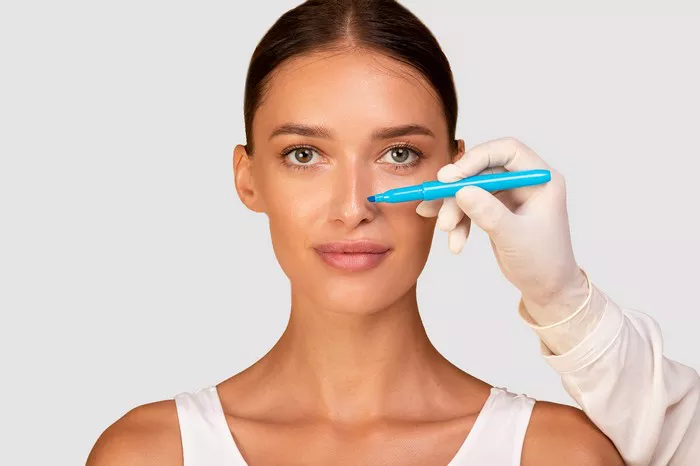Rhinoplasty, commonly known as a “nose job,” is a popular cosmetic surgical procedure that aims to reshape and enhance the appearance of the nose. While rhinoplasty is generally considered safe, it is crucial for individuals considering the procedure to be well-informed about the risks associated with any surgical intervention. In this article, we will explore the likelihood of death associated with rhinoplasty, the factors that can affect the risk, and steps to ensure a safe and successful procedure.
Understanding the Risks of Rhinoplasty
Rhinoplasty is a surgical procedure, and like any surgery, it carries inherent risks. However, it’s essential to note that the risk of death from a nose job is exceedingly low. Cosmetic surgery, including rhinoplasty, is typically performed by skilled and board-certified plastic surgeons who prioritize patient safety.
Key risks associated with rhinoplasty include:
Infection: Although rare, infection can occur after rhinoplasty. Surgeons take stringent measures to minimize this risk, such as using sterile instruments and prescribing antibiotics as needed.
Anesthesia Complications: Anesthesia is an essential part of any surgical procedure. While complications related to anesthesia are rare, they can include allergic reactions or adverse responses. An experienced anesthesiologist is crucial for minimizing these risks.
Bleeding: Some post-operative bleeding is normal, but excessive bleeding can occur, requiring medical attention. Surgeons take precautions during surgery to minimize the risk of bleeding.
Scarring: Rhinoplasty is designed to minimize visible scarring. In open rhinoplasty, a small external incision may be made, but it is typically discreet and well-hidden.
Unsatisfactory Results: While not life-threatening, dissatisfaction with the results is a risk of any cosmetic procedure. Patients should have realistic expectations and communicate their goals clearly with their surgeon.
Chances of Death from Rhinoplasty
The risk of death from rhinoplasty is exceptionally low and statistically rare. According to the American Society of Plastic Surgeons, the mortality rate for all cosmetic surgeries, including rhinoplasty, is less than one in 50,000 cases. This statistic underscores the safety of rhinoplasty when performed by skilled and experienced surgeons in accredited facilities.
Factors That Can Affect Risk
Several factors can affect the risk associated with rhinoplasty:
Surgeon’s Experience: The skill and experience of the surgeon are paramount. Choosing a board-certified plastic surgeon with a proven track record in rhinoplasty can significantly reduce the risk of complications.
Patient Health: A patient’s overall health and medical history play a vital role in determining surgical risk. Patients should disclose their complete medical history, including any pre-existing conditions, to their surgeon.
Facility Accreditation: The choice of a reputable, accredited surgical facility is essential. Accredited facilities adhere to strict safety and quality standards.
Anesthesia Expertise: The qualifications and experience of the anesthesiologist administering anesthesia are critical for patient safety.
Patient Compliance: Following pre-operative and post-operative care instructions, including refraining from smoking and alcohol, is crucial for minimizing risks.
Steps to Ensure a Safe Rhinoplasty
To further reduce the already low risk of complications from rhinoplasty, patients can take the following steps:
Consultation: Schedule a thorough consultation with a board-certified plastic surgeon to discuss your goals, expectations, and any concerns you may have.
Medical Evaluation: Undergo a comprehensive medical evaluation to assess your suitability for surgery.
Ask Questions: Don’t hesitate to ask your surgeon about their experience, the surgical technique they plan to use, and the facility’s accreditation.
Follow Instructions: Adhere to pre-operative and post-operative instructions provided by your surgeon. This may include abstaining from certain medications and substances, as well as following a healthy lifestyle.
Recovery: Allow yourself adequate time to recover and heal. Avoid strenuous activities during the initial stages of recovery and attend all scheduled follow-up appointments.
Conclusion
The likelihood of dying from a nose job is exceedingly rare, thanks to the stringent safety measures, experienced surgeons, and advanced medical techniques used in modern rhinoplasty procedures. While there are inherent risks associated with surgery, including infection, anesthesia complications, and bleeding, the overall risk of a fatal outcome is extremely low.
Patients considering rhinoplasty should prioritize their safety by choosing a reputable surgeon, undergoing a thorough evaluation, and following pre-operative and post-operative care instructions diligently. By doing so, individuals can have confidence in their decision to undergo rhinoplasty and achieve their aesthetic goals safely and successfully.


